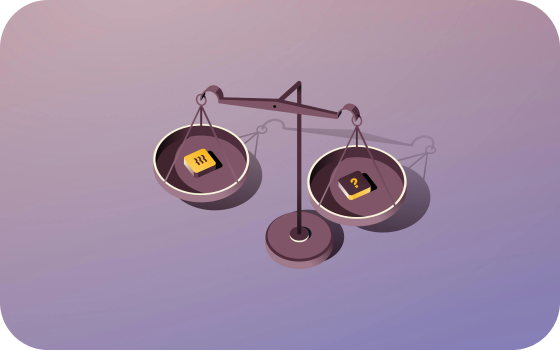Incentive compensation refers to a range of financial perks, including bonuses, commissions, stocks, and other monetary benefits, used to motivate employees to achieve specific goals or objectives. Incentive based compensation is designed to align employee efforts with company goals, and it plays a crucial role in enhancing performance and driving organizational success.
Types of incentive compensation plans
Incentive compensation is a system in which top performers in the company receive financial benefits, rewards, or compensation based on their sales performance, achievement of targets, contribution to business goals, and other benchmarks. These rewards, offered in addition to the employee’s base salary, are structured to inspire your workforce and align their actions with the organization's strategic objectives.
Incentive compensation plans can take various forms, including monetary and non-monetary incentives, and can be structured for short-term or long-term impact.
Monetary incentives vs. non-monetary incentives
Monetary incentives involve direct financial rewards, such as bonuses or commissions, while non-monetary incentives focus on non-cash rewards, such as recognition or career development opportunities. Both types of incentives play crucial roles in motivating employees, but they cater to different aspects of employee satisfaction and engagement.
Monetary incentives
Monetary incentives, also known as incentive pay or variable compensation, are financial rewards given to employees for meeting or exceeding specific performance goals. These incentives are often tied to measurable metrics or outcomes, such as number of closed deals, deadlines met, projects or initiatives completed on deadline, and similar individual performance measures.
Examples of monetary incentives include bonuses, commissions, and stock options.
Non-monetary incentives
Non-monetary incentives are rewards that do not involve direct financial compensation but still serve to motivate and engage team members. These incentives often focus on employee recognition, personal growth, and work-life balance. Examples of non-monetary incentives include recognition programs, promotions, or professional development opportunities.
Long-term incentives vs. short-term incentives
Incentive compensation plans can also be categorized into long-term and short-term incentives. Understanding the differences between these types helps in crafting a balanced and effective company strategy.
Short term incentives
Short term incentives are rewards based on employee performance over a short period, typically within a fiscal year or less. They are designed to motivate employees to achieve immediate objectives, enhance short-term performance, and drive specific actions or behaviors. Examples include annual bonuses, quarterly performance bonuses, and sales compensation.
Many companies consider them excellent motivations for a busy season, a particularly important project, or a transitional period.
Long-term incentives
Long-term incentives are rewards based on performance over an extended period, often several years. They aim to align employees’ interests with the company's long-term success, encouraging retention and commitment.
Examples include stock options, long-term bonus plans, and profit-sharing plans. These employee incentives are pertinent to a wide array of industries. Only dedicated employees with many years of service will likely strive to achieve these incentives, so it’s crucially important to choose long-term incentives worth long-term effort.
Balancing both types of incentives ensures employees are motivated to achieve both immediate goals and contribute to the organization's long-term success.
Other types of incentive compensation
Common types of incentive compensation can include:
- Bonuses: Lump-sum incentive payments awarded to employees for achieving predefined goals or milestones. Bonuses can be based on individual performance, team performance, or company-wide success.
- Sales commissions: Payments made to sales reps based on the revenue or profit they generate to act as a sales incentive. Commissions are typically a percentage of the employee’s sales.
- Profit-sharing: A plan that distributes a portion of the company’s profits to employees, usually based on the company’s overall financial performance.
- Stock options: The opportunity for employees to purchase company stock at a discounted price, allowing them to benefit from the company’s growth over time.
- Retention bonuses: Payments given to key employees as an incentive to stay with the company during critical periods, such as mergers or restructuring.
- Recognition programs: Public acknowledgment of an employee’s achievements, such as "Employee of the Month" awards, certificates, or company-wide announcements.
- Professional development: Opportunities for employees to enhance their skills and advance their careers through training programs, workshops, or conferences.
- Flexible work arrangements: Offering options like remote work, flexible hours, or compressed workweeks to improve work-life balance.
- Career advancement opportunities: Promotions, leadership roles, or special projects that allow employees to grow within the company.
- Wellness programs: Access to health and wellness resources, such as gym memberships, mental health support, or wellness challenges.
- Annual incentives: Rewards based on annual performance metrics, often tied to company profitability or specific departmental goals.
- Spot bonuses: Immediate financial rewards given to employees for exceptional performance or contributions outside of their regular duties.
- Sales contests: Competitive programs where sales employees compete to achieve the highest sales figures within a set timeframe, with rewards for top performers.
- Referral bonuses: Payments made to employees who refer successful candidates for job openings within the company.
- Team-based incentives: Rewards distributed among team members for achieving collective goals, encouraging collaboration and teamwork.
- Non-cash rewards: Gifts, travel opportunities, or merchandise given to employees as a reward for their contributions.
- Gainsharing: A program where employees receive bonuses based on the company’s ability to improve productivity and reduce costs.
- Discretionary bonuses: Bonuses awarded at the discretion of management, typically for outstanding performance or contributions.
- Deferred compensation plans: Incentives that are paid out at a later date, such as retirement plans or stock options, designed to retain employees over the long term.
This approach provides immediate rewards and long-term incentives to foster continuous employee engagement and performance. Short-term incentives are like snacks that sustain motivation; long-term incentives are designed to be like deeply satisfying meals that satiate employees after prolonged satisfactory performance.
Pros and cons of incentive compensation
Pros of incentive compensation
Cons of incentive compensation
Increased motivation: By linking rewards to specific performance targets, employees are motivated to achieve set goals. Employees also work more efficiently when they know their efforts will be rewarded.
Complexity and administration: Designing and managing incentive compensation plans can be complex and time-consuming. Companies need to ensure that the plans are fair, transparent, and effectively communicated to all employees.
Improved retention: Competitive incentive plans increase job satisfaction and employee retention rates. Long-term incentives like stock options encourage employees to stay with the company and contribute to your growth. Leaving the company or taking a competitive job offer would sacrifice their progress toward long-term incentives.
Cost: Implementing incentive compensation plans can be costly, especially if the payouts are not aligned with the company’s overall financial performance. It’s essential to ensure that the benefits of the plan outweigh the costs.
More flexibility: Incentive compensation plans can be tailored to fit different roles, departments, or business units. Employee feedback offers insight into preferred incentives. Plans can also be adjusted to align with changing business objectives or market conditions. If your goals change, redirect progress toward incentives by promoting a different objective.
Unintended consequences: If not carefully designed, incentive plans can encourage undesirable behaviors, such as cutting corners to achieve targets or fostering unhealthy competition among employees.
Better performance: Incentive compensation creates a culture of excellence and accountability where high performance is recognized and rewarded. You're going above and beyond by providing incentives to your employees. They will likely feel inclined to go above and beyond to reach their incentivized goals.
How to design an incentive compensation program
Here are some key steps to consider when designing an effective incentive compensation plan.
1. Keep it simple
The plan design should have straightforward criteria for earning rewards to avoid confusion among employees. Simple plans are also easier to communicate to your workforce, reducing misunderstandings and enhancing motivation.
Don’t use an incentive compensation plan that could be deemed misleading. Any incentive compensation plan with too much fine print may cause dissatisfaction and garner mistrust.
2. Make it measurable
The criteria for earning incentives should be measurable and specific, allowing employees to track their progress. Employees want to see their efforts paying off, even if they’ve yet to reach their incentivized goal.
Make it simple for employees to track their progress toward obtaining incentives. You can use objective performance metrics to ensure fairness and transparency in reward distribution and to avoid favoring specific employees for their unique talents or skills.
3. Make it attractive
Your incentives should be appealing and competitive within your industry to attract and retain top talent. If your workforce doesn’t feel that your incentives are worth the effort, your incentive compensation program will be ineffective. It’s important to ensure that the rewards resonate with employees' personal and professional goals, enhancing their motivation.
4. Make it fair
Ensure the plan is fair and equitable so all employees have a reasonable opportunity to earn rewards based on their performance. If most employees are having difficulty reaching incentives, that's a sign that your incentive compensation plan and workplace support systems need adjustment. Review and adjust the plan periodically to maintain fairness and address any emerging issues.
Frequently asked questions about incentive compensation
How can companies forecast the costs of incentive compensation plans?
controlling costs is an important part of incentive compensation management. Companies can use forecasting tools (particularly incentive management software) to predict the potential costs of their compensation strategies. By analyzing past performance data and current business conditions, stakeholders can estimate the financial impact of their compensation strategy and make informed, data-driven decisions to optimize their future incentive compensation plans.
How do you optimize an incentive compensation plan for different employee roles?
Companies should tailor the pay plan to match the specific responsibilities and goals of different roles. Customization helps ensure that each employee is motivated by targets that are relevant to their job and aligned with their department's objectives.
Is incentive compensation part of performance management?
Performance management and incentive compensation go hand-in-hand. Incentive compensation payouts can come after review cycles—and be tied to positive performance reviews. By using incentive compensation software that has an integration with your performance management software, you may even be able to automate incentive payments that are tied to performance.
Rippling and its affiliates do not provide tax, legal, or accounting advice. This material has been prepared for informational purposes only, and is not intended to provide, and should not be relied on for, tax, legal, or accounting advice. You should consult your own tax, legal, and accounting advisors before engaging in any related activities or transactions.









































































































